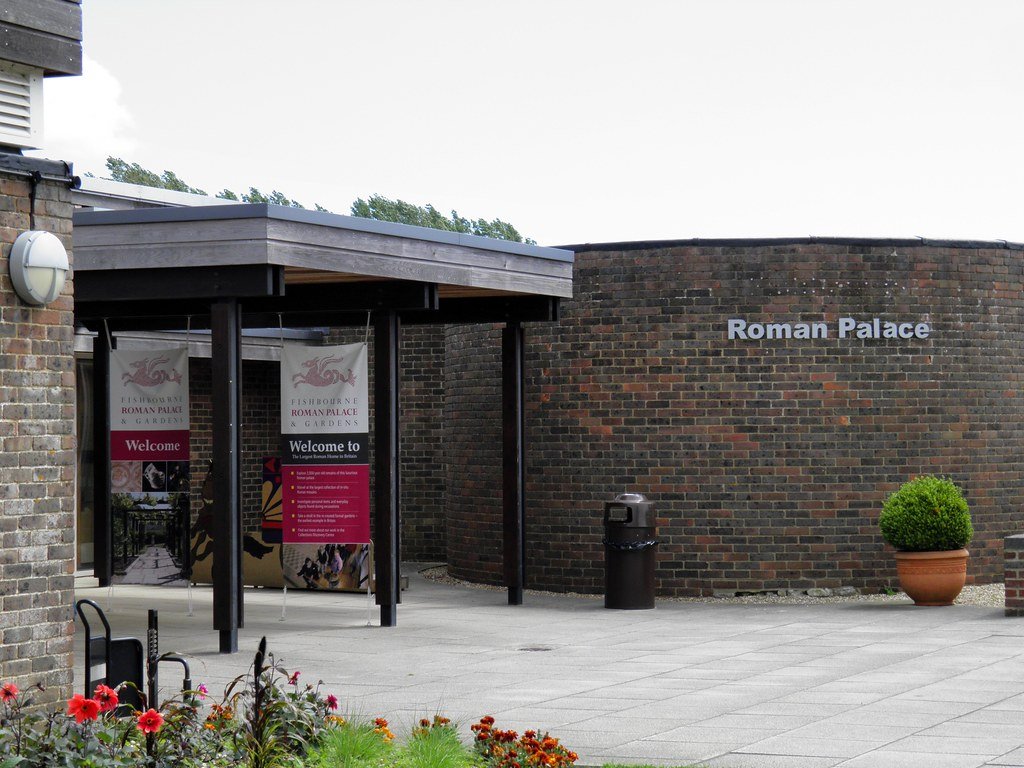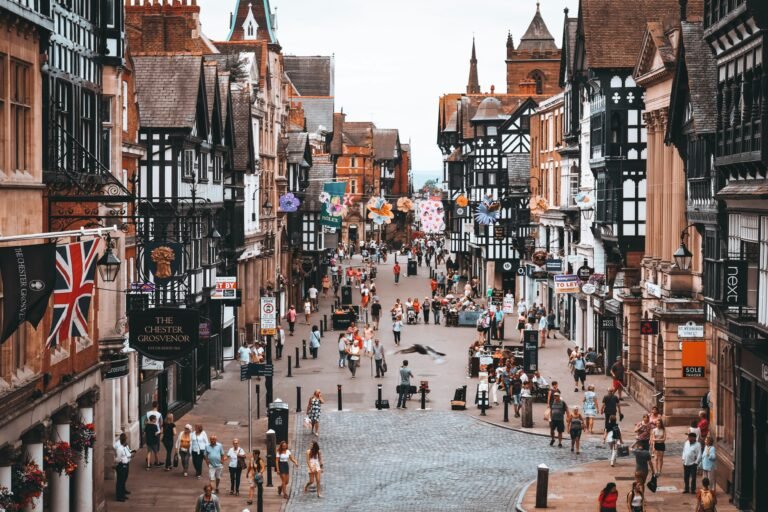Nestled close to the city of Chichester in West Sussex, Fishbourne Roman Palace is one of the most noteworthy Roman archeological sites in Britain. built in the 1st century AD, the palace gives us an exceptional glimpse into the greatness of Roman Britain. Covering about five acres, it was one of the biggest Roman residential buildings in northern Europe and boasted opulent mosaics, meticulously outlined gardens, and stunning design. But what makes Fishbourne Roman Palace really extraordinary isn’t just its scale, but what it uncovers about Roman life, politics, and power during their occupation of Britain.
History of Fishbourne Roman Palace
The story of Fishbourne Roman Palace starts with its disclosure in the 1960s. Local workers stumbled upon antiquated Roman artifacts while digging trenches for a water main, sparking archeological interest. This led to the uncovering of one of the biggest Roman structures ever discovered in Britain.

Built around 75 AD, the palace likely served as the home of a prominent Roman official or maybe a local tribal leader aligned with the Romans, possibly King Cogidubnus. The palace’s construction happened during a period of consolidation of Roman control in Britain, and its greatness suggests it was a center of political impact.
The Architecture and Layout
The sheer scale of Fishbourne Roman Palace sets it apart from other Roman villas in Britain. Constructed around a central courtyard, the building was an impressive four-winged structure, much like the luxurious palaces of the Roman elite in Italy.
Key Features of Roman Architecture Seen in Fishbourne
The palace featured several hallmarks of Roman architectural brilliance, such as underfloor heating systems (hypocausts), lavish bathhouses, and intricate mosaic floors. Each room had a distinct function, from residential quarters to reception halls, with the layout designed to showcase the wealth and status of its owner.
The Magnificent Mosaics
Fishbourne is especially popular for its mosaics. These decorative floors, made with thousands of tiny colored stones (tesserae), are some of the finest examples of Roman artistry in Britain. The mosaics portray geometric designs, mythical creatures, and nature scenes. One of the most famous mosaics features Cupid riding a dolphin, symbolizing love and beauty in Roman mythology.


Artistic Significance of the Mosaics
The mosaics not only reflect the Roman appreciation for art but also hint at the cultural exchange between Roman and native British craftsmanship. Each design was carefully planned to be both functional and decorative, reinforcing the message of power, sophistication, and affluence.
Daily Life in Fishbourne Palace
Life at Fishbourne Roman Palace would have been a mix of Roman luxury and British practicality. As the home of an affluent and powerful individual, the palace would have been staffed by numerous workers and slaves, who maintained the household and gardens. The proprietor would have entertained visitors in the grand reception corridors, feasting and engaging in political discourses.
Roman Luxury and Leisure
Roman luxury was reflected in all aspects of life at Fishbourne, from the heated bathhouses to the lush gardens. Roman Britain was a blend of military might and cultured living, and Fishbourne stood as a symbol of this union. The palace’s residents would have enjoyed imported goods like wine, olive oil, and fine pottery, all reflecting the wealth and connectivity of the Roman Empire.
Fishbourne Gardens: Roman Landscaping Masterpiece
The gardens at Fishbourne Roman Palace are one of the earliest examples of formal Roman gardens in Britain. Symmetrically arranged around the palace, these gardens featured a variety of plants and trees imported from across the Roman Empire, including Mediterranean species that required careful cultivation.
Roman Influence on Garden Layout
The Romans were famous for their garden plans, which served both aesthetic and viable purposes. The gardens at Fishbourne were meticulously organized, with pathways, water features, and a range of plants chosen not only for their beauty but also for their imagery. These gardens were as much a statement of power as the palace itself.
Artifacts Found at Fishbourne
During excavations, archeologists revealed a wealth of artifacts that offer insights into life at the palace. Things such as pottery, jewelry, and instruments were found, giving a glimpse into the everyday activities of the palace’s inhabitants.
What These Artifacts Reveal About Roman Life
These objects reveal much about the fusion of Roman and native British culture. Some of the pottery was imported from distant parts of the Roman Empire, while other items were of local origin, showing how Roman customs blended with indigenous practices.
Fishbourne’s Role in Roman Britain’s History
Fishbourne Roman Palace was more than just a luxurious residence; it was a political and military hub. Located near Chichester, it was in a strategic position for both defense and trade. The palace likely played a key role in the Roman consolidation of southern Britain, serving as a base for Roman administrators and military officials.
Fishbourne as a Symbol of Wealth and Power
The scale and opulence of Fishbourne Roman Palace indicate that it was a clear symbol of Roman power in Britain. The lavishness of the mosaics, the size of the palace, and the sophistication of its design all point to the palace as a place where power was both demonstrated and consolidated.
Preservation and Conservation Efforts
Preserving Fishbourne Roman Palace has been a monumental task. The site is vulnerable to the elements, particularly the intricate mosaics, which require constant care to prevent deterioration. Modern archaeology has also played a crucial role in understanding and preserving the palace, employing new technologies to map out and protect the site.
Fishbourne Roman Palace Museum
Today, the palace is home to a museum that houses numerous of the artifacts found on-site. Tourists can see the mosaics up close and learn about the history of the palace through interactive shows. The exhibition hall offers an important instructive experience, bringing the Roman world to life.
Events and Educational Programs at Fishbourne
Fishbourne Roman Palace hosts various events and educational programs throughout the year. These include guided tours, reenactments of Roman life, and hands-on workshops where visitors can learn about Roman craftsmanship, such as mosaic making.
Fishbourne and the Local Community
Fishbourne Roman Palace is an integral part of the local community in West Sussex. Its historical significance attracts tourists from around the world, boosting the local economy and providing educational opportunities for schools and families.
How to Visit Fishbourne Roman Palace
It is simple to visit Fishbourne Roman Palace since it is situated just outside of Chichester. The area has great access to public transportation and gives plenty of parking for guests who come by car. Visitors are prompted to allude to the museum’s website for the most up-to-date data on opening hours and any upcoming occasions.
Conclusion
Fishbourne Roman Palace stands as a confirmation of the glory of Roman Britain. Its scale, mosaics, and artifacts all give a striking picture of life in Roman Britain, mixing luxury with political importance. As one of the most important archeological sites in the UK, it continues to offer important experiences into the history of the Roman Domain and its impact on Britain.








